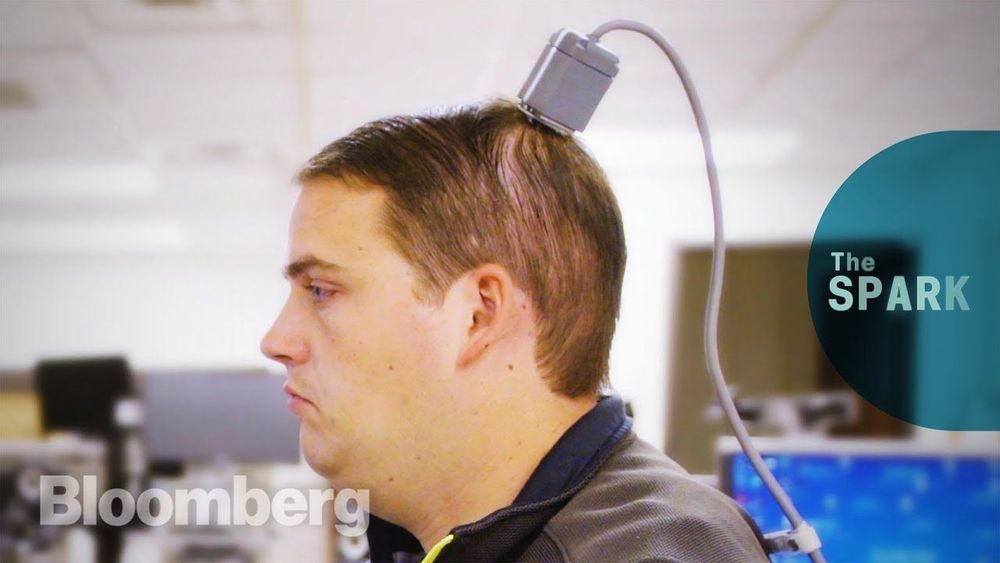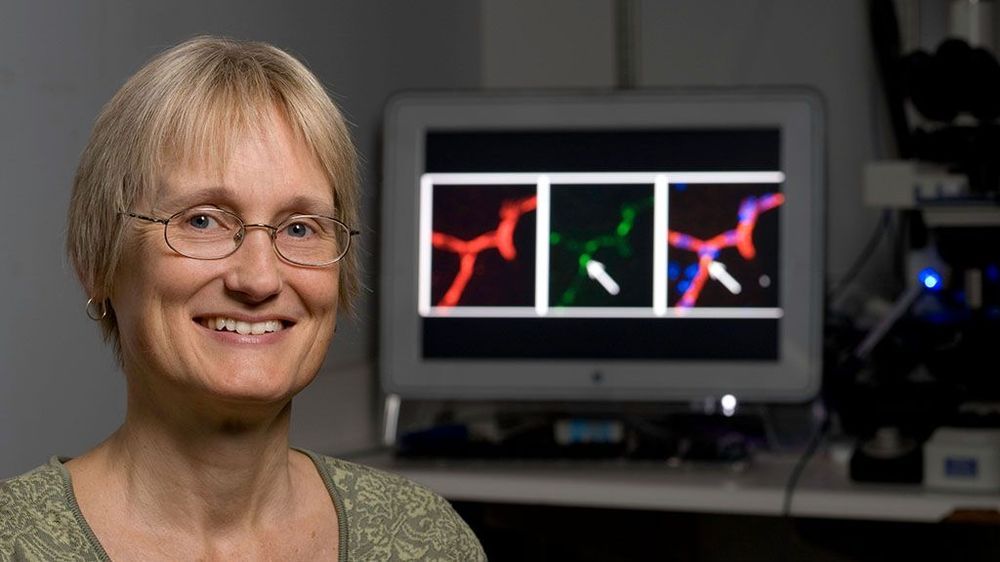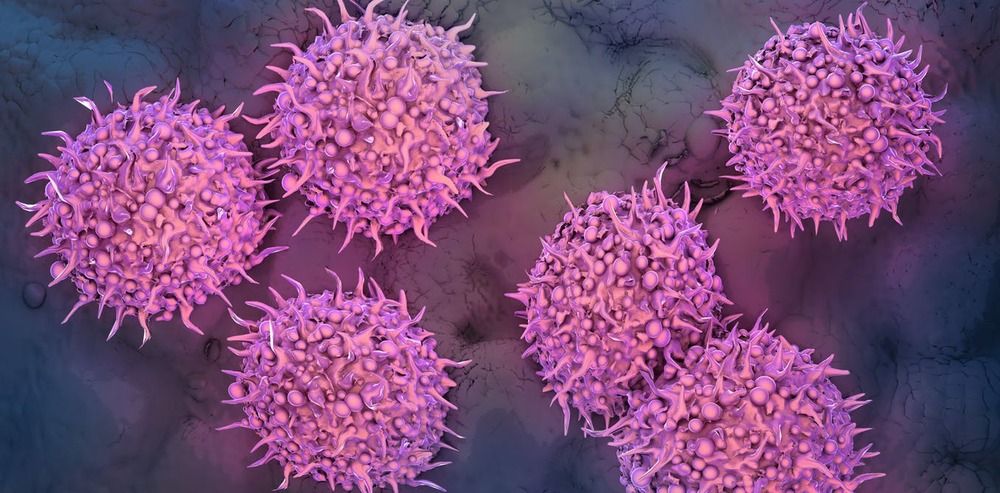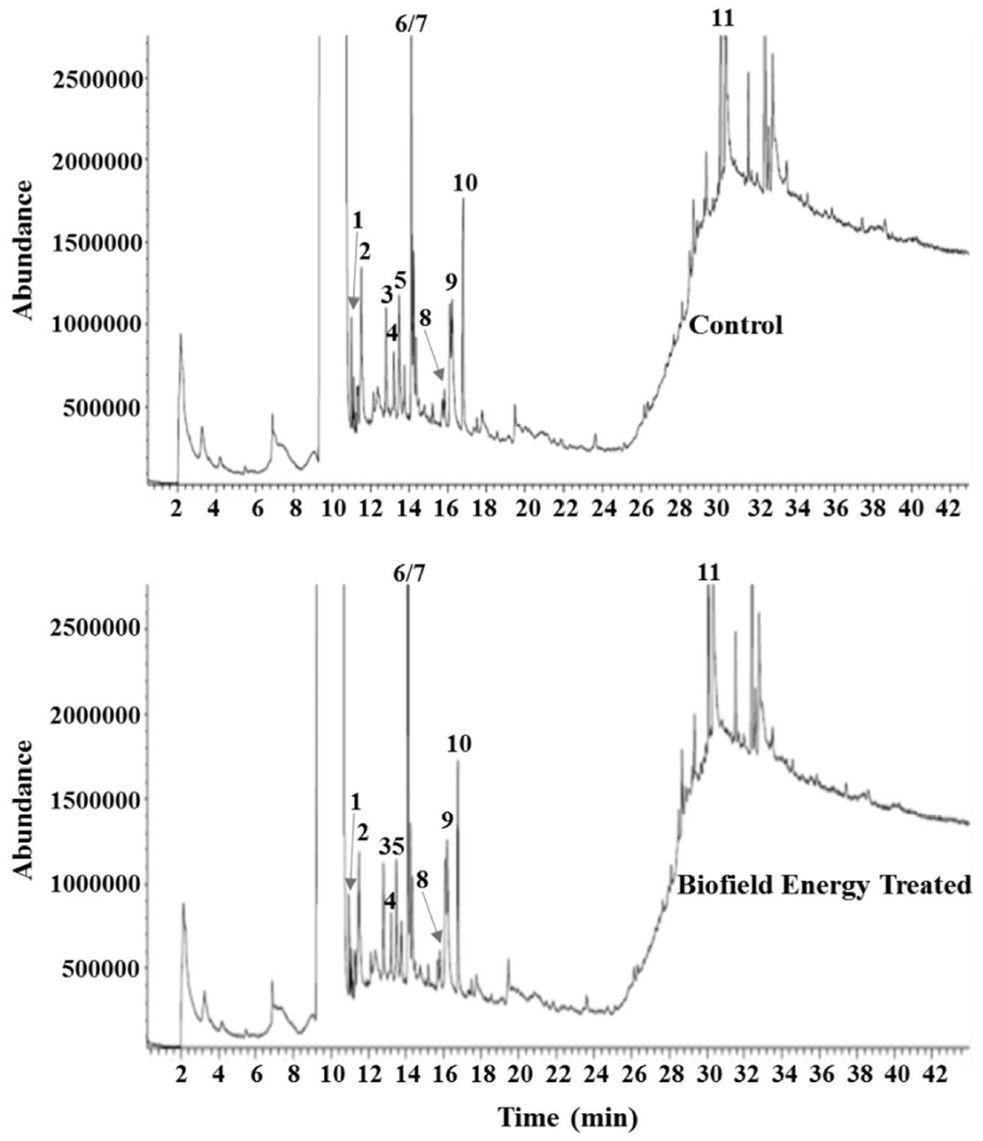Sleep is essential to all animals with a nervous system. Nevertheless, the core cellular function of sleep is unknown, and there is no conserved molecular marker to define sleep across phylogeny. Time-lapse imaging of chromosomal markers in single cells of live zebrafish revealed that sleep increases chromosome dynamics in individual neurons but not in two other cell types. Manipulation of sleep, chromosome dynamics, neuronal activity, and DNA double-strand breaks (DSBs) showed that chromosome dynamics are low and the number of DSBs accumulates during wakefulness. In turn, sleep increases chromosome dynamics, which are necessary to reduce the amount of DSBs. These results establish chromosome dynamics as a potential marker to define single sleeping cells, and propose that the restorative function of sleep is nuclear maintenance.
Category: neuroscience – Page 834
It sounds like science fiction: a device that can reconnect a paralyzed person’s brain to his or her body. But that’s exactly what the experimental NeuroLife system does. Developed by Battelle and Ohio State University, NeuroLife uses a brain implant, an algorithm and an electrode sleeve to give paralysis patients back control of their limbs. For Ian Burkhart, NeuroLife’s first test subject, the implications could be life-changing.
Featured in this episode:
Batelle:
https://www.battelle.org/
Ohio State University
https://wexnermedical.osu.edu/
Producer and Editor — Alan Jeffries
Camera — Zach Frankart, Alan Jeffries
Sound Recordist — Brandon MacLean
Graphics — Sylvia Yang
Animators — Ricardo Mendes, James Hazael, Andrew Embury.
Sound Mix and Design — Cadell Cook.
In a way, the connectome is also a foundation for understanding far more complex nervous systems like our own.
“If a worm can do so much with so few neurons, and we have orders of magnitude more neurons,” Paul Sternberg, a biology professor at the California Institute of Technology in Pasadena, told Scientific American, “then we’re amazing.”
The datasets that were generated from and analysed in the current study are available at wormwiring.org
Instead of trying to fix stroke-damaged nerve cells, Stanford scientists took aim at a set of first-responder immune cells that live outside the brain but rush to the site of a stroke. It worked.
Music has proven time and again to be an important component of human culture. From its ceremonial origin to modern medical usage for personal motivation, concentration, and shifting mood, music is a powerful balm for the human soul. Though traditional “music therapy” encompasses a specific set of practices, the broader use of music as a therapeutic tool can be seen nowadays as doctors are found recommending music for a wide variety of conditions.
Thomas Durcan’s lab is growing 3D mini-brains in the search for a cure for Parkinson’s disease. Over the next year he is giving all his lab’s protocols, methods and results away.
A new method enables researchers to test algorithms for spotting genes that contribute to a complex trait or condition, such as autism.
Researchers often study the genetics of complex traits using genome-wide association studies (GWAS). In these studies, scientists compare the genomes of people who have a condition with those of people without the condition, looking for genetic variants likely to contribute to the condition. These studies often require tens of thousands of people to yield statistically significant results.
GWAS have identified more than 100 genomic regions associated with schizophrenia, for example, and 12 linked to autism. Results are often difficult to interpret, however. Causal variants for a condition may be inherited with nearby sections of DNA that do not play a role.
You don’t improve the body by breaking its parts. In the case of prostate cancer this might be a fair trade-off, but unless you have a specific medical condition that is serious and life-threatening you should not be poisoning yourself with metabolism breaking chemicals. They will have negative impacts all over the body as a rule.
- Prostate cancer patients who take a hormone-suppressing drug may be at an increased risk for dementia and Alzheimer’s, a study has found.
- The study of more than 150,000 men found a link between the degenerative diseases and a treatment drug called androgen deprivation therapy.
- Researchers cautioned doctors to further consider the risks of ADT before giving it to their patients to treat prostate cancer.
- Visit Business Insider’s homepage for more stories.
A study of more than 150,000 men with prostate cancer found that a certain hormone treatment is linked with increased risks of dementia and Alzheimer’s.
There’s a 20-percent higher chance of having dementia for older men who have taken the prostate cancer treatment, according to the research study from JAMA Network. That drug treatment, called androgen deprivation therapy (ADT), is used to suppress male hormones (like testosterone) that can help to spread prostate cancer in the body.
Researchers have recently found bacteria residing in the brain, once believed to be a completely sterile environment. The discovery raises profound questions.
Withania somnifera (Ashwagandha) root extract is very popular ancient herbal medicine. The objective of the study was to characterize and evaluate the impact of The Trivedi Effect® — Energy of Consciousness Healing Treatment (Biofield Energy Healing) on phytoconstituents present in the ashwagandha root extract using GC-MS and NMR. Ashwagandha root extract was divided into two parts. One part was denoted as the control, while the other part was defined as The Trivedi Effect® — Biofield Energy Treated sample, which received The Trivedi Effect® — Energy of Consciousness Healing Treatment remotely from eighteen renowned Biofield Energy Healers. The GC-MS data indicated that the peak height and peak area of The Trivedi Effect® treated sample were found to be altered compared with the control sample. The peak height of the phytoconstituents present in the treated ashwagandha sample was altered significantly in the range of −8.32% to 89.25% compared with the control sample. Similarly, the peak area of the treated sample was altered significantly in the range of — 4.28% to 216.30% compared with the control sample. Overall, the change in the peak area% of the treated sample was significantly altered in the range of −18.29% to 170.18% compared with the control sample. The GC-MS and NMR analysis results identified the presence of withanolides such as glyco-withanolides, alkaloids, and sugars in the root extract in both the sample. The peak area of 2,3,4,5-tetrahydropyridazine , methyl ethyl sulfoxide , 5,6-dihydro-2-methyl-4(H)pyran-3,4-dione , diethoxy-2-methyl-propane , 2,3,4,5-tetrahydroxy-tetrahydro-pyran , and 3,4-dimethyl-2(3H)-furanone were significantly increased by 170.18%, 58.21%, 7.74%, 139.50%, 23.16%, and 45.63%, respectively in the treated sample compared with the control sample. On the contrary, the peak area% of 2-hydroxy-γ-butyrolactone was decreased by — 14.96% in the treated ashwagandha compared with the control sample. From the results, it can be hypothesized that The Trivedi Effect® — Biofield Energy Treatment might have the impact on the intrinsic physicochemical properties of the phytoconstituents present in the ashwagandha root extract and responsible for the alteration in the relative peak height/area of treated sample compared with the control sample. As a result, the concentrations of the phytoconstituents assumed to be increased in treated sample compared with the control sample. This treated ashwagandha root extract would be helpful for designing better nutraceutical/pharmaceutical formulations which might be providing a better therapeutic response against autoimmune diseases, nervous and sexual disorders, infectious diseases, antiaging, diabetes, cancer, immunological disorders, stress, arthritis, etc.
Keywords:
Biofield Energy Healing Treatment, Biofield Energy Healers, Consciousness Energy Healers, The Trivedi Effect®, Withania somnifera, Withanolides, GC-MS, NMR.









